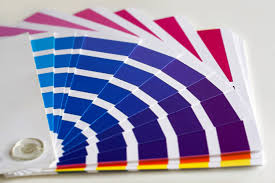
Difference between Screen Printing and Heat Transfer

FAQ: Difference between Screen Printing and Heat Transfer
Creating design for your custom, original t-shirts, caps, hoodies or tote bags might be exhausting and difficult. Same is true for searching for printing method that works best for your design and chosen fabric.
There are free most common printing options: Direct-to-garment, screen printing (SP) and heat transfer (HT). We described DTG in detail earlier here, so this time we want to talk about SP and HT, their pros and cons, so you would understand both methods and choose which one is better for you.
The basic scheme of Screen printing is following:
1) once you created your design for t-shirt and sent it to our production site, the original image (text, logo, simple forms or pictures) uploads to special software that splits it to a different color elements\layers;
2) For each color\layer, we create a special ‘screen’ – stencil which will be used for spreading ink to the garment to the specific areas;
3) Color by color, screen after screen (actual number depends on complexity of your design) graphics being printed to the garment.
Heat Transfer
The Heat transfer is a printing method that can use two different technologies.
First (digital print heat transfer) combines ink printing with hot press transferring. On the first stage, the graphics your created is printed on a special printer using a solvent ink and heat transfer paper. After that image is being transferred from the paper to the garment using hot press.
Second way of the Heat transfer – Vinyl heat transfer – is more difficult and time consuming. First, special software splits desired graphics to a different color elements. Second, special computerized cutter cuts out separate elements of colored vinyl sheets. Finally, with a hot press each color vinyl elements is being printed onto garment.
So what should I choose?
Well, that depends on complexity of your design, type of garment and order’s size. Due to the technical specifics Screen printing is an optimal solution for large order (from ____ units). Regarding the Heat transfer, cost-per-unit is basically the same for either small (just couple t-shirts) or large orders.
